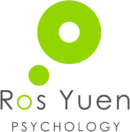Same Sex Couples Counselling Adelaide
Same-sex couples generally face the same relationship issues that opposite-sex couples do. Additionally, they have to deal with homophobia, heterosexism, and other societal prejudices.
Same sex couples
In December 2017, the Australian Parliament legalised same-sex marriage signalling an increasing acceptance of the equality of same-sex couples. Research shows that overall, relationship satisfaction and quality are about the same across all couple types indicating that gay and lesbian relationships are comparable to straight relationships in many ways.
Interesting results for the Gottman Gay/Lesbian Couples Study
In a 12 year study, Dr Gottman and his colleagues found that all couple types have many of the same problems and the same challenges to staying happy together. However, same-sex couples are better than heterosexual couples in conflict. They use humour to defuse and are able to calm down during a fight. Gay/lesbian couples use fewer controlling, hostile emotional tactics in conflict suggesting that fairness and power-sharing between partners is more highly valued in gay and lesbian relationships than straight relationships. When unhappy, same-sex partners are less aroused than heterosexual partners. This lower arousal enables same-sex partners to be calmer and less aggressive in conflict.
Interestingly gay/lesbian couples who received the Gottman Method Couple Therapy improved twice as much as straight couples in nearly half the sessions that is typically required for heterosexual couples.
These results point to the resilience in same-sex relationships. Nonetheless, they still face the everyday demands of close relationships in a social context of isolation and prejudice that is unique to them.
Demographics
According to the 2011 Census, there are 17,600 male same-sex couples and 16,100 female same-sex couples totaling 33,700 same-sex couples in Australia. They make up 1% of all Australian couples. In opposite-sex couples, the average age gap between the older partner and the younger partner was 3.7 years and in the majority of cases, the older partner was male and the younger partner was female. For female same-sex couples, the average age gap between partners was 4.8 years and for male same-sex couples, the average age gap was 6.5 years.
People in same-sex relationships tend to be more highly educated than opposite-sex spouses. 43% of partners in same-sex couples have a university degree compared to 23% of people in opposite-sex relationships
Additional concerns
Same-sex couples face more societal censure than their opposite-sex peers:
- Homophobia- there is still considerable homophobia in society so that same-sex couples have to be careful in accessing professional support. And even if one member of the couple experiences discrimination, both partners suffer.
- Outness – relates to the degree of openness that gay or lesbian individuals show regarding their lives to their families and friends. It is not uncommon to be more “out” in one setting but not another and for one partner to be more “out” than the other.
- Rituals of connection- unlike the opposite-sex couple, the same-sex couple can not be openly affectionate with each other without fearing homophobic responses.
- Negotiating pooled finances, moving for one another due to career advancements, mutual inheritance, acceptance into the in-law’s family, compatible gender roles with regards to sex, housework and career are some of the extra areas that same-sex partners have to navigate with more care and deliberation than opposite-sex couples.
- Family – most same-sex couples gain support from two or three very close friends of the couple and other extended support, in other words, their “family of choice” as opposed to their natural families.
How your psychologist can help
Psychologists are trained to genuinely respect and value individual differences. In addition, she should have a good grasp of the sociological pressures on same-sex couples as well as their strengths.
Book a Telehealth Appointment
I understand that life can be busy, and that it’s not always easy to commit to regular in-person counselling sessions, especially when coordinating couples or families. Telehealth appointments (via Zoom or phone) provide the opportunity to meet online from the comfort of your home or another safe space, helping to reduce travel time, ease scheduling pressures, and maintain consistency when attending the clinic isn’t possible.
While I recommend beginning with one or two face-to-face sessions to build a strong foundation, telehealth offers the flexibility to continue your counselling journey while balancing other life commitments. Whether you’re seeking individual, couples, or family counselling, this option ensures therapy remains accessible and supportive in a way that works best for you.
Ready to get started? Book your telehealth appointment online today, or contact me directly for more details.




